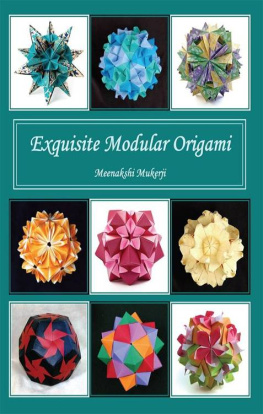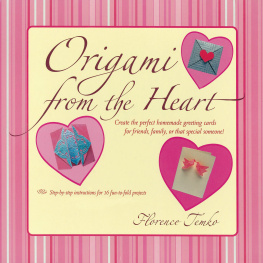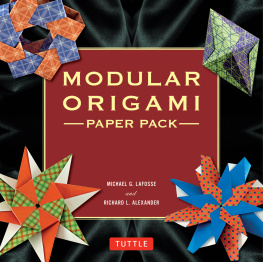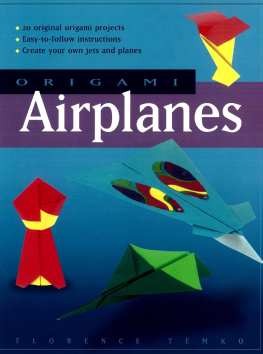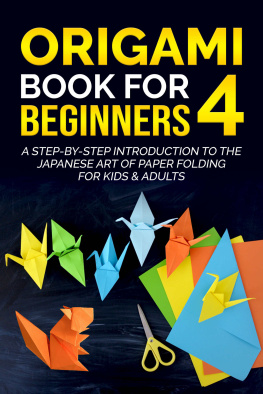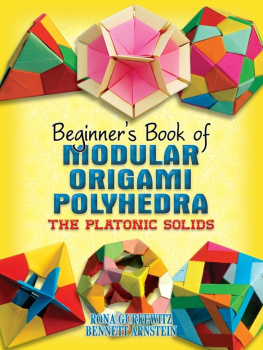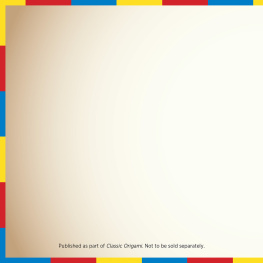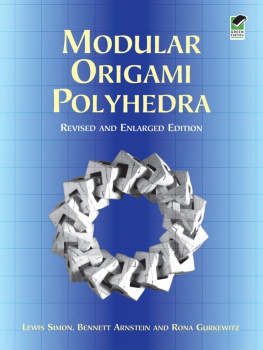Meenakshi Mukerji - Exquisite Modular Origami
Here you can read online Meenakshi Mukerji - Exquisite Modular Origami full text of the book (entire story) in english for free. Download pdf and epub, get meaning, cover and reviews about this ebook. year: 2011, publisher: CreateSpace IPP, genre: Children. Description of the work, (preface) as well as reviews are available. Best literature library LitArk.com created for fans of good reading and offers a wide selection of genres:
Romance novel
Science fiction
Adventure
Detective
Science
History
Home and family
Prose
Art
Politics
Computer
Non-fiction
Religion
Business
Children
Humor
Choose a favorite category and find really read worthwhile books. Enjoy immersion in the world of imagination, feel the emotions of the characters or learn something new for yourself, make an fascinating discovery.
- Book:Exquisite Modular Origami
- Author:
- Publisher:CreateSpace IPP
- Genre:
- Year:2011
- Rating:5 / 5
- Favourites:Add to favourites
- Your mark:
Exquisite Modular Origami: summary, description and annotation
We offer to read an annotation, description, summary or preface (depends on what the author of the book "Exquisite Modular Origami" wrote himself). If you haven't found the necessary information about the book — write in the comments, we will try to find it.
This is a step by step how-to book for making modular origami models based on polyhedra. You will be amazed that these stunning models are made out of something as ordinary paper. Author Meenakshi Mukerji is the winner of Origami USAs 2005 Florence Temko Award. You are bound to love this book if you love origami, polyhedra, symmetry, geometry, and mathematics. Or you will simply love it. The models presented here are proven favorites, the diagrams having been wanted by fans worldwide. Expect hours of enjoyment folding over a dozen models and learn about polyhedra while you enjoy. Remember to visit the authors popular origami website, http://www.origamee.net. Some praise for her previous books in the same subject, Marvelous Modular Origami (2007), Ornamental Origami: Exploring 3D Geometric Designs (2009), and Origami Inspirations (2010) is below:
Meenakshis work is both intricate and lovely. Shes greatly respected in the origami world, one of the well-known world leaders in modular origami. Her books offer a nice exposition of the mathematical elements, but youre not being hit over the head with math lessons. You learn things without even realizing that you have.
Robert Lang, worlds leading origami artist
A whole book [Origami Inspirations] full of amazingly attractive new modular pieces, highly recommended to all modular folders and those wanting to dabble in this pastime. High standard of diagramming and model novelty applied throughout.
David Petty, British Origami Society
Mukerji presents yet another colorfully illustrated book, Origami Inspirations, showing in clear diagrams how to make complex three-dimensional figures by folding paper.
SciTech Book News
Ornamental Origami is a wonderful book for both math and origami lovers alike. The author provides, clear descriptions and beautiful photographs.
MAA Reviews
Ornamental Origami is essentially a study of polyhedra but in a way that brings out the symmetry in subtle ways. It builds up very complicated results from simple modules so that even a beginner in origami can follow and learn about polyhedral symmetry by assembling them. It should definitely find a place in school teaching or mathematics clubs.
John Sharp, The London Mathematical Society Newsletter
Meenakshi Mukerji: author's other books
Who wrote Exquisite Modular Origami? Find out the surname, the name of the author of the book and a list of all author's works by series.

